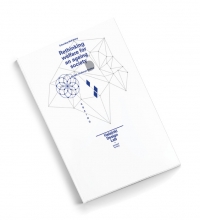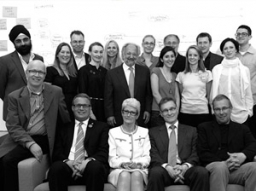
This is an excerpt from the HDL Challenge Briefing on Ageing
As the average age of Finland and many societies in the developed world steadily rises, the basic assumptions of daily life are being rewritten. This change affects not only the members of this ageing population, who are facing increasing competition with a constantly growing peer group, but also by those individuals and communities who provide care and support for the elderly. As Baby Boomers retire, every level of society will be affected—from the individual to the institutional—with particular attention focused on the interfaces between these different groups.
The coming of this “Silver Wave” is coincident with broader structural changes occurring globally. Post-war welfare institutions are subject to additional stresses as they confront unfamiliar conditions such as expanding markets and competition, increasing diversity and fluidity, and new understandings of citizenship, participation, and social relationships. Welfare systems will have to evolve along with the constituencies that they serve if both are to continue with dignity into the twenty-first century.
The Nordic Model has garnered particular attention because of its manifold successes. Tight integration into social fabrics and deep penetration into economic foundations make the Nordic Model unique among welfare systems. It is unclear if such a structured, embedded model is flexible enough to accommodate the onset of these structural challenges.
Models that prove too rigid or brittle will likely fail under mounting pressures. An agile response will require that the “how” be as flexible as the “who” is diverse and numerous. Success suggests three major shifts:
- Broadening the emphasis of care beyond institutions;
- Repositioning our understanding of the elderly as a norm
rather than the exception; - Intensifying our attention to social wellness in addition to
biomedical health.
The future of social welfare systems—their scope, structure, and form—is in flux as societies continually struggle to provide for the well-being of all its citizens. This state of flux is particularly important as the Silver Wave fundamentally shifts the dependency ratio, a term used to describe the balance between productive and dependent members of society.
Providing adequate care for the elderly, while also preserving their dignity, will be one of the earliest challenges for exist- ing welfare systems. Handling the ageing challenge will yield broader insights for understanding how society at large cares for itself. Harnessing the untapped potential of the elderly as a value-producing segment of society, rethinking societal and institutional roles and responsibilities, and devising new ways to measure progress and set targets constitute key areas for future development.
The basic terms of the discussion remain open for definition. For instance, “old age” can be described in a multitude of ways: although a biological definition may be the easiest to evaluate, it can also be limiting. To recast ageing as an opportunity rather than as a problem—to change the very understanding of “elderly” is where we must start any conversation about the future of these welfare systems and the populations they support.
Source: HDL Challenge Briefing on Ageing 1.0

